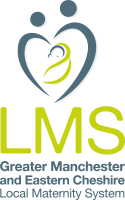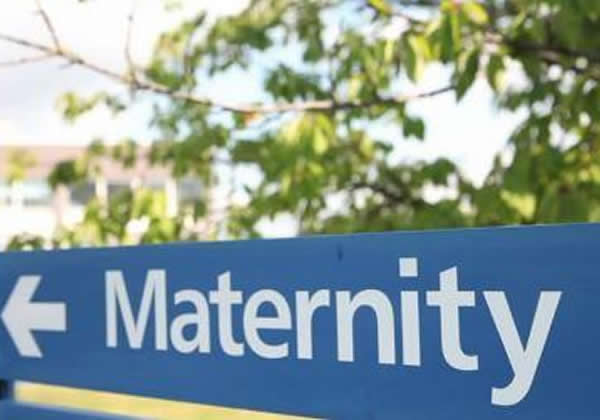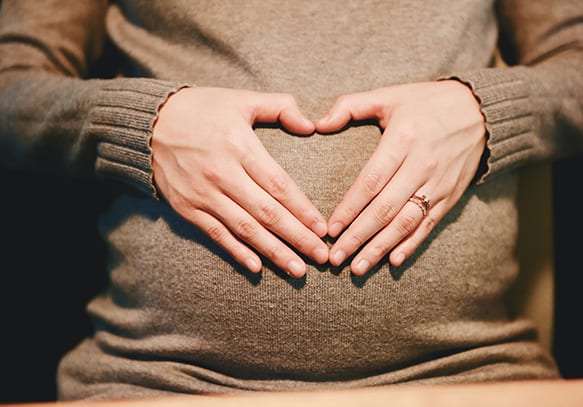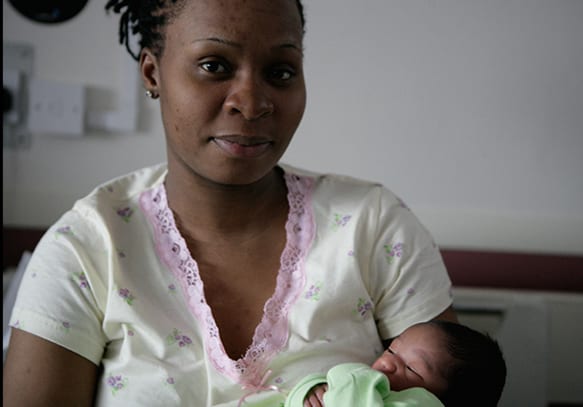Transcript – Coping with mild to moderate pain during labour
This information is about options for pain relief to help with mild to moderate pain that you may be in when in active labour. The term analgesia refers to medication that helps to relieve pain and the ‘analgesia ladder’ refers to advice that you begin with weaker pain relief options and increase the strength of the analgesia as the pain gets worse. The latent phase of labour is when you start to notice signs of early labour, but they have not fully developed into active labour. These signs can include having a mucous ‘show’, where the plug of mucous sealing the neck/entrance of the uterus (womb) is loosened and is passed, or you begin to have irregular contractions that vary from being weak to stronger, but do not last too long. Early contractions can feel like period pains or backache and might cause some discomfort. It is likely that you will still be at home for much of the latent phase of labour and if you are uncomfortable, it is useful to have some ideas of how best to manage this. Light exercise, massage, and at home medication such as paracetamol can help, but when the contractions become more intense the following options may be of interest to you:
Breathing and relaxation Techniques are known to help you cope with pain. Focussing on deep breathing and using other relaxation techniques such as using dim lighting/ calming music or aromatherapy. Aromatherapy is when you use the scent of essential oils to help relax the body. This can be done by using a few small drops of the oil on a cloth, in the bath or in a diffuser (ask your midwife for advice about this). When the body is more relaxed, endorphins and the hormone Oxytocin are released, and these help you to feel well. Oxytocin also helps to encourage contractions, so this helps your labour to progress. The tension in your muscles will also be reduced if you feel relaxed and this in turn helps to relieve any pain or discomfort.
A Birthing pool can be an option as being in warm water during labour is shown to help with pain. The warmth of the water is comforting and helps to relax the body which, as we know, helps in relieving the pain. It is also easier to move when you are in the water, so you can be more active and find a position in which you are more comfortable. You will have made a decision about where you want the birth to take place by this stage and birth pools are an option when you and your baby are well and at home, in a midwifery led unit or on the Consultant obstetric labour ward. If a pool is not available to you, a warm shower or bath can help.
A TENS Machine is a small piece of equipment that has four pads that are placed on your lower back and delivers electrical impulses across your skin. These impulses disrupt the pain response within your nerves to help alleviate the pain. It is controlled by you, has no side effects and other mums report that it’s effective in helping to cope with pain in early labour.
Gas and Air, also known as Entonox, is a compressed gas (half oxygen and half nitrous oxide) which is inhaled through a mouthpiece. It is commonly used in labour and affects brain impulses to take the edge off of the pain rather than taking it away. It begins to affect the body quickly with minimal side effects – although occasionally it may cause nausea and dizziness but will then ease off within minutes if you don’t like it.

